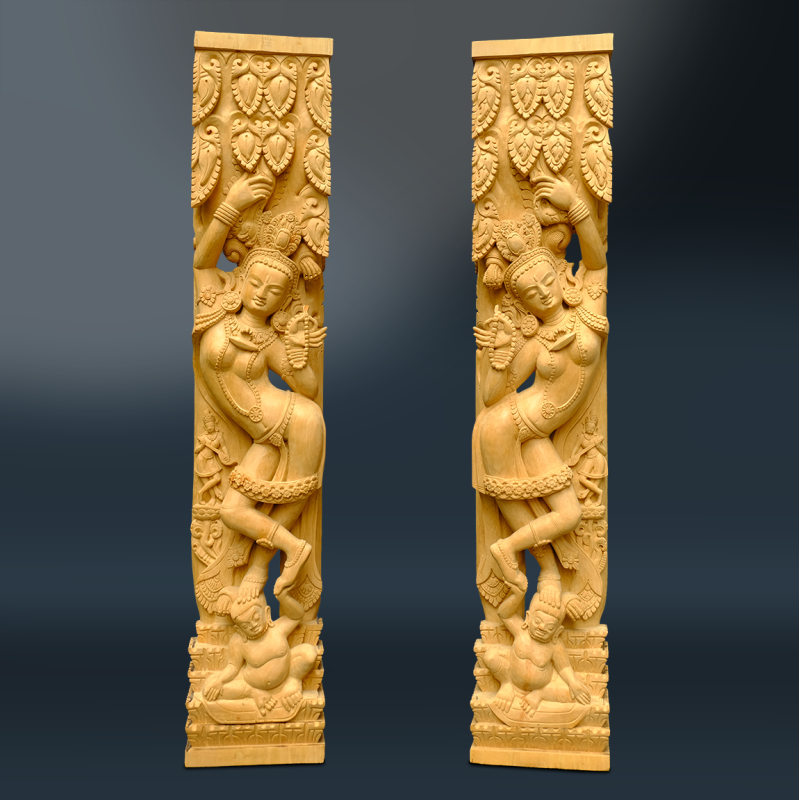








Kunsthandwerk Holzschnitzarbeit vom Nepalesischen Kunstmarkt. Gezeigt wird das "Maya Devi und Maha Maya stehend auf Betala" eine Darstellung aus dem Tibetischen Buddhismus
Keeping an old tradition alive
Woodcarving involves the use of various tools such as knives, chisels and chisels to create a work of art or sculpture. Nepal has a rich history of woodcarving, with woodcarvers creating great works of art.
The Malla period (13th to 18th centuries) and the Licchavi period before that are the golden era of cultural renaissance in Nepal. During this period, wood carving and wooden architecture gained prominence. The ancient city of Kathmandu has incredible wooden buildings, temples and palaces.
The local community has successfully passed on the traditional art form to the younger generations, keeping it alive.
Here we show the representation of Maya Devi and Maha Maya standing on Betala.
One carving each: Weight: 8 Kg - Height: 92 cm - Depth: 11 cm - Width: 17 cm
I was allowed to take these beautiful wood carvings directly from the artist to Germany to offer them here.
Maya (sometimes also Māyā) was - according to Buddhist tradition - Buddha's biological mother. She is also called Mahamaya ("Great Maya") or Mayadevi ("Queen Maya", "Goddess Maya"). In Tibetan Buddhism, her name is Gyutrulma. Her name means "enchantment" or "illusion", which is associated with her extraordinary beauty.
Maya was the consort of King Śuddhodana of the Shakya tribe in Kapilavastu and the birth mother of Buddha. After her marriage to King Śuddhodana had not produced any children for 20 years, Maya dreamt on a full moon night that she was abducted by celestial spirits (devas) to a lake in the Himalayan mountains; after bathing in the lake, she was dressed by the devas in celestial robes, sprayed with precious perfume and sprinkled with flower petals. In her sleep, a white elephant with a lotus blossom on its tusk appeared to her, circled her three times and then entered her through her right side. Later, the elephant disappeared, but after awakening she knew that something very special had happened to her, because elephants - especially white ones - are regarded in Asia as embodiments or symbols of power and being chosen.
After ten months of pregnancy, she is said to have started a journey to her parents' house in Devadaha to give birth there, but halfway there, near the present-day city of Lumbini (Nepal) - standing and holding on to the branches of a sal tree (Shorea robusta), which was often mistaken for an Ashoka tree (Saraca asoca) in ancient writings - she gave birth to a son, who was named Siddhartha. According to tradition, the birth is said to have occurred through Maya's right side; seven days after the birth, she died. All this happened, according to Buddhist tradition, in 563 BC.